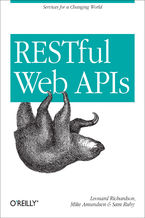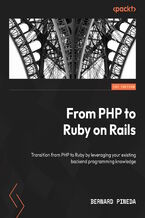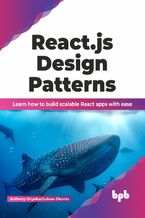Ruby Cookbook. 2nd Edition Lucas Carlson, Leonard Richardson


- Autorzy:
- Lucas Carlson, Leonard Richardson
- Wydawnictwo:
- O'Reilly Media
- Ocena:
- Stron:
- 992
- Dostępne formaty:
-
ePubMobi
Opis
książki
:
Ruby Cookbook. 2nd Edition
Why spend time on coding problems that others have already solved when you could be making real progress on your Ruby project? This updated cookbook provides more than 350 recipes for solving common problems, on topics ranging from basic data structures, classes, and objects, to web development, distributed programming, and multithreading.
Revised for Ruby 2.1, each recipe includes a discussion on why and how the solution works. You’ll find recipes suitable for all skill levels, from Ruby newbies to experts who need an occasional reference. With Ruby Cookbook, you’ll not only save time, but keep your brain percolating with new ideas as well.
Recipes cover:
- Data structures including strings, numbers, date and time, arrays, hashes, files and directories
- Using Ruby’s code blocks, also known as closures
- OOP features such as classes, methods, objects, and modules
- XML and HTML, databases and persistence, and graphics and other formats
- Web development with Rails and Sinatra
- Internet services, web services, and distributed programming
- Software testing, debugging, packaging, and distributing
- Multitasking, multithreading, and extending Ruby with other languages
Wybrane bestsellery
O'Reilly Media - inne książki
Dzięki opcji "Druk na żądanie" do sprzedaży wracają tytuły Grupy Helion, które cieszyły sie dużym zainteresowaniem, a których nakład został wyprzedany.
Dla naszych Czytelników wydrukowaliśmy dodatkową pulę egzemplarzy w technice druku cyfrowego.
Co powinieneś wiedzieć o usłudze "Druk na żądanie":
- usługa obejmuje tylko widoczną poniżej listę tytułów, którą na bieżąco aktualizujemy;
- cena książki może być wyższa od początkowej ceny detalicznej, co jest spowodowane kosztami druku cyfrowego (wyższymi niż koszty tradycyjnego druku offsetowego). Obowiązująca cena jest zawsze podawana na stronie WWW książki;
- zawartość książki wraz z dodatkami (płyta CD, DVD) odpowiada jej pierwotnemu wydaniu i jest w pełni komplementarna;
- usługa nie obejmuje książek w kolorze.
Masz pytanie o konkretny tytuł? Napisz do nas: sklep@ebookpoint.pl
Książka drukowana
































Oceny i opinie klientów: Ruby Cookbook. 2nd Edition Lucas Carlson, Leonard Richardson
(0)